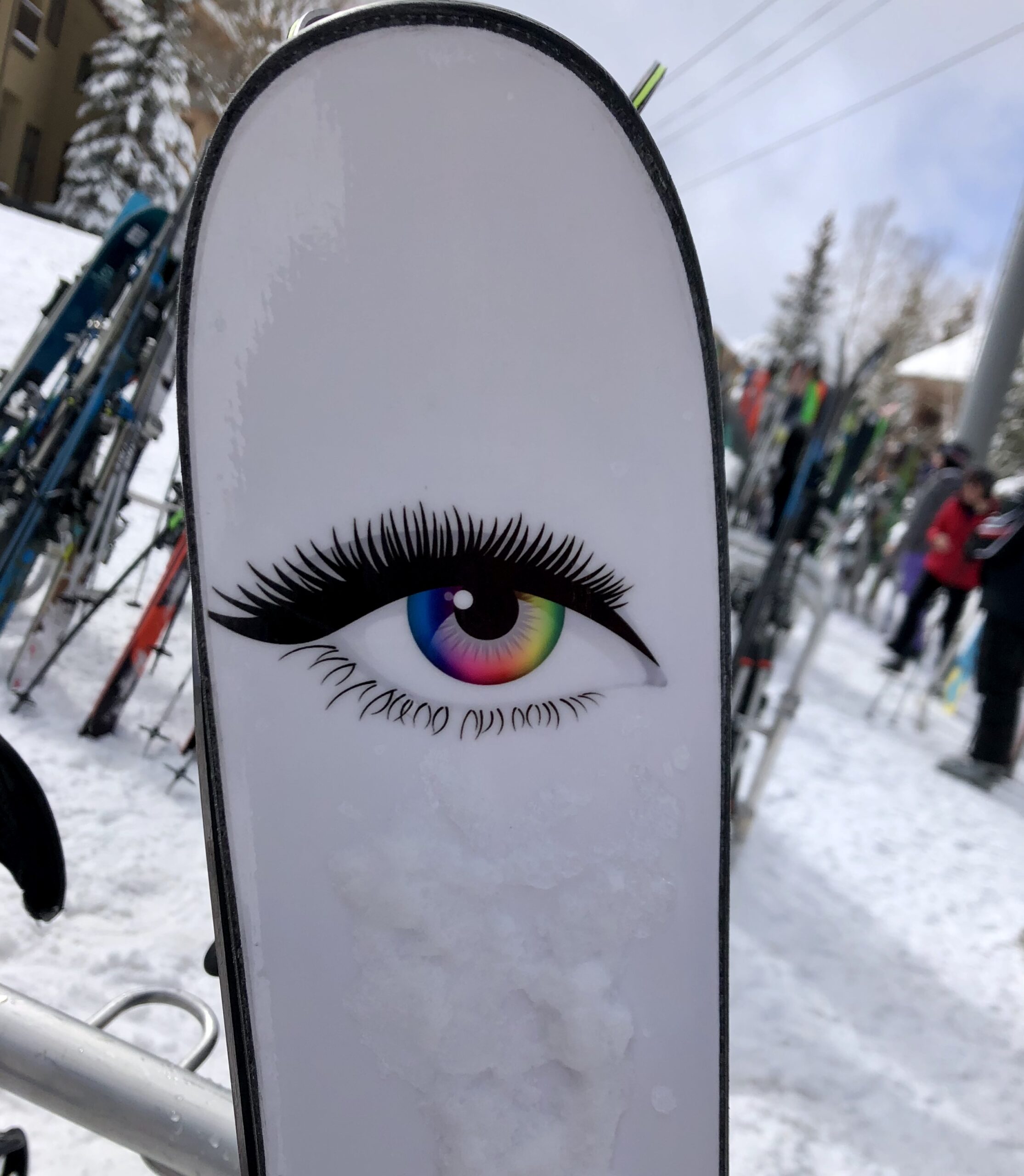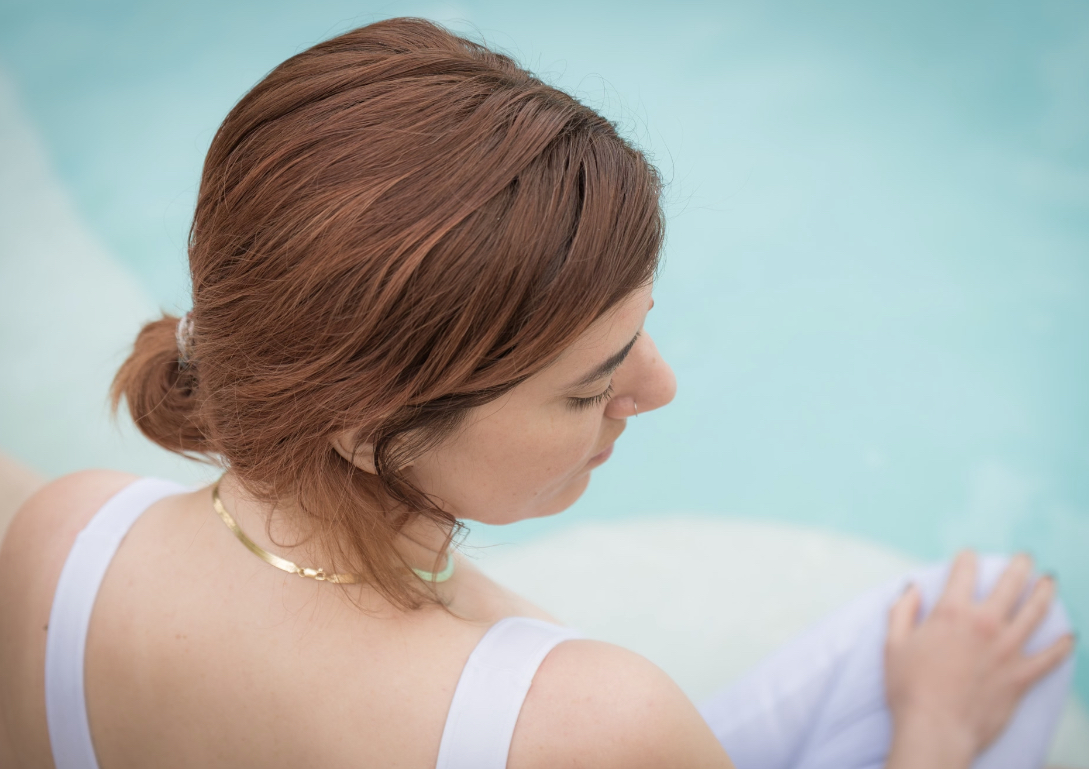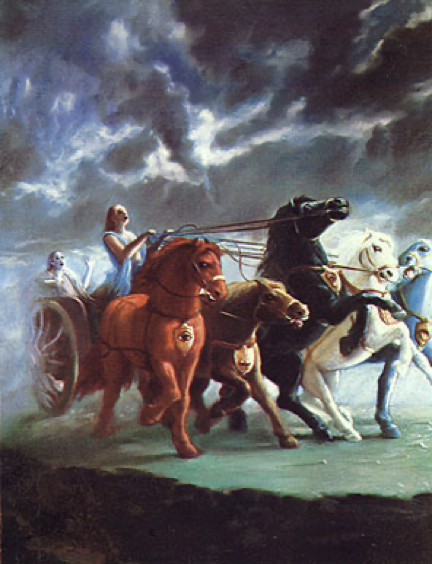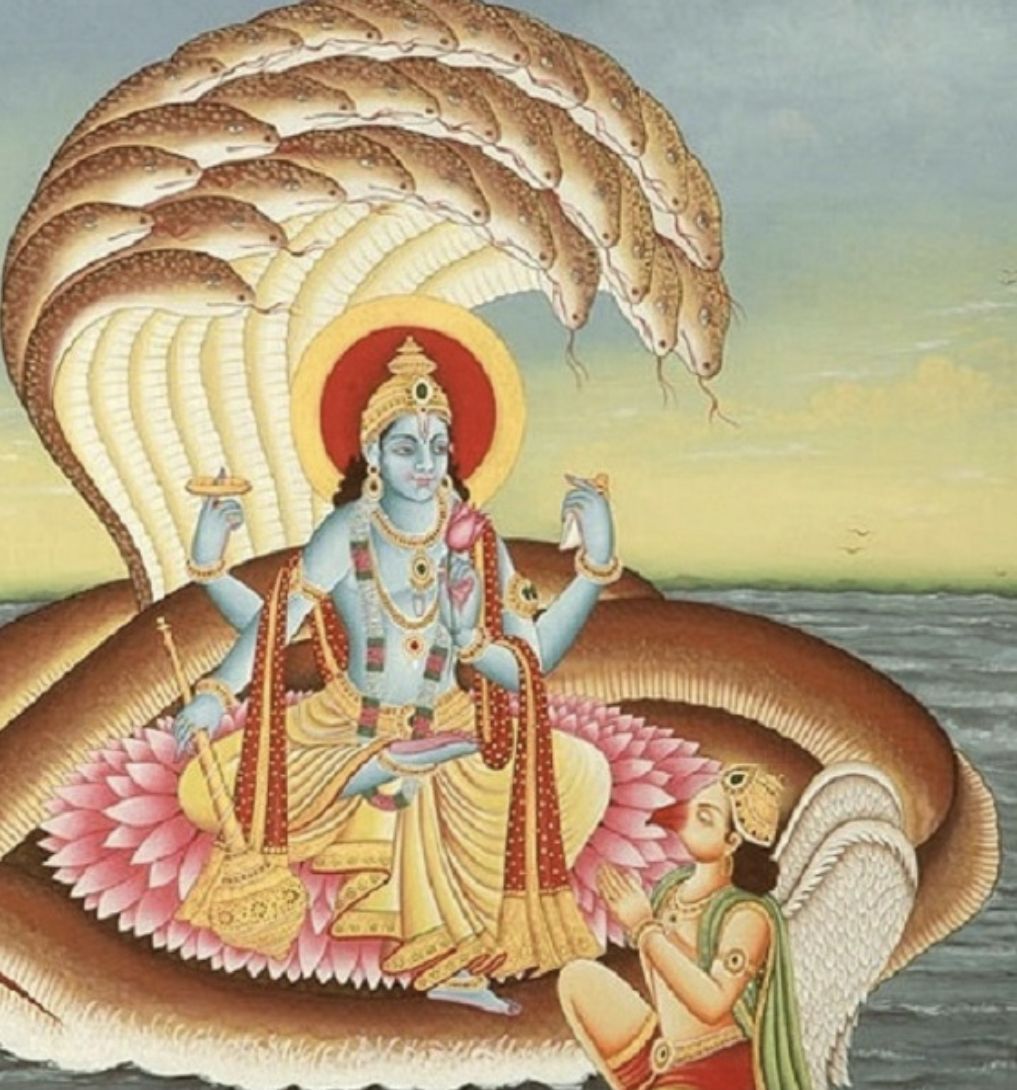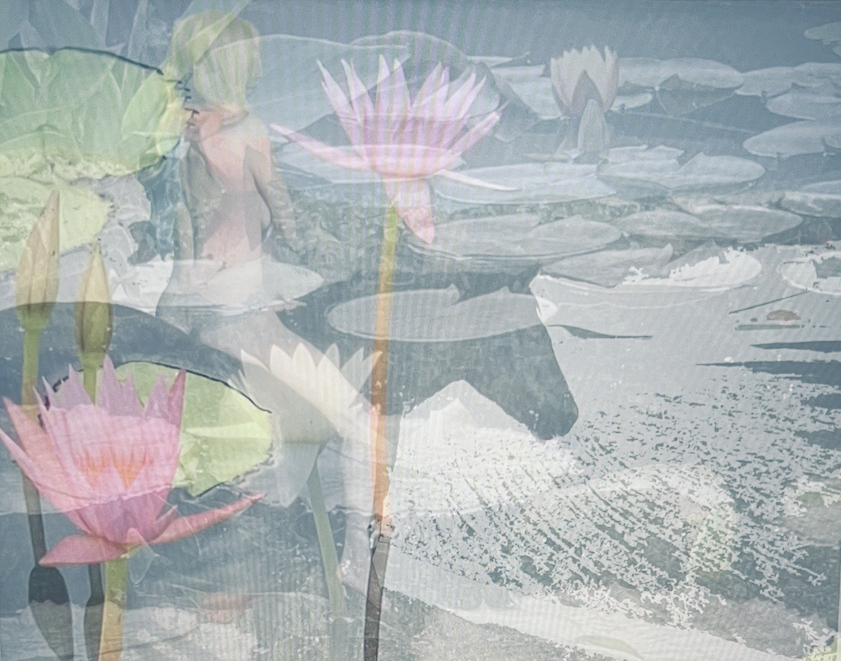The proverbial underpinnings of an Eastern saying like, “When the student is ready the teacher appears,” suggests a catalyst for change. A beckoning of sorts to finally act on something not entirely potentiated. As a student of yoga, the rich ontological practice and philosophy of the Yoga Sutras has been my introspective springboard if not a neurological adventure I’ve yet to fully comprehend. So when an opportunity avails, guidance is appreciated.
I keep my finger on pulse of such things because as a teacher in my own right, I have a responsibility for the sake of reporting. From getting on my mat for an experimental sequence of asanas to sharing a meditative epiphany, my transparent dedication is strong. However, the sheer simplicity or sophistication in the unfolding of a yogic experience is not always immediately apparent. Especially when looking into the eyes driven by a thousand pounds of power and grace.
Did I mention my new yoga teacher was a horse? Her name is Utina.
Utina is an unmistakable force of nature and her classroom is my vast internal grassland of discovery. Our common ground shared from the perspective of both horse psychology and yoga is mindfulness. Many experts in the field of equitation will tell you that being in the present is key to interacting with a horse.
Meeting Utina
Never having had an opportunity to be up close and personal with an equine mind before, this was new. Moving to Colorado and volunteering at the Farview Horse Rescue opened my world to horses beyond the limiting conventions of guest riding stables. Founder, Kimberly Kissmann, partners horses with her community volunteers and it’s where I met this inimitable quarter horse. Saved from the grim fate of a “kill truck,” Utina arrived at Farview ranch around the same time I did. I was getting my orientation in the care of its four legged friends while Utina was settling into her new environs.
Word circulated that she may have been a barrel racer unduly taxed and forsaken. Many horses show up at Farview with similar stories arriving emotionally distraught or completely shut down. Kimberely gives them the chance to reignite their spirit and let their personalities shine on the possibilities for a better life.
Utina never lost her spark, but she was jaded and needed human kindness. For me, it was a chance to quench a lifelong thirst of horse crazy and I instantly gravitated into her orbit. However reluctant Utina appeared to be at the drudgery of acquainting horsemanship to the likes of me was juxtaposed by my unwavering passion she could not quell.
The idea of stable tranquility is easily sewn into the tapestry of yoga and especially, The Yoga Sutras. The first of its 196 Sanskrit aphorisms, Atha yoganusasanam (now the practice of yoga begins) fundamentally implies the entirety of mindfulness as a science. Followed by the second thread: Yogas citta yritti nirodhah (yoga is the cessation of fluctuations in the mind) not only fosters the technique in facilitating the clarity of calm awareness, but conveniently adds potential to my experience with Utina.
Like the Sutras, Utina encapsulated the whole teaching early on. Despite my peaceful my demeanor and gentle advances, she quickly ratcheted my learning curve. If we were to understand one another, it would be through the language of energy.
The Language of Energy
Horses famously communicate with their ears and tails. They also make audible sounds, but most importantly they articulate by the ebb and flow of energy. Familiar with this idea and having spent decades cultivating passive energy, I thought engaging with Utina would be easy. It was nearly impossible. My investment in yogic neutrality was inconsequential and in our herd of two was going nowhere. Getting her attention was tepid at best as my attempts to connect veered from the sublime to the ridiculous.
That the vigilance of a prey animal like a horse includes a keen receptiveness to energy, harnessing it as a language was challenging. The yielding energetic frequency of yoga fell flat in my vibrational narrative. My “sankalpa” approach, the effortless flavor of energy as an intension tending to be like an affirmation was failing. My desire to “hold space” for her was moot. Neither gained the amplitude to reflect more than boredom, if not ambivalence.
The Yoga Sutras say that awareness is what enables the witnessing of experiences. So much so, I questioned how surrendering to the moment was helping me now. The concept of the “Seer” simply noticing thoughts, cares, and observations as separate from the self is a meditative benefit contextually, but was I meditating a vital current right out of myself?
Mirroring Emotion
Ethologist, Franz de Waal’s, Are We Smart Enough to Know How Smart Animals Are?, goes on to explain how horses possess an emotional intelligence that responds to human behavior and the emotions guiding that behavior like a mirror. Their self-awareness in understanding others distinct from themselves known as “theory of mind” is combined with their exceptional ability to distinguish nuances of electromagnetic fields.
A hallmark of the species and central to a relationship with a human, Utina’s truth was telling. Natural horseman and author of the book, Horses Never Lie,” Mark Rashid embraces what horses teach by mirroring as does Farview’s Kimberly Kissmann. Buck Brannaman, the renown inspiration of the movie, Horse Whisperer,” sums it up with his quote: “The horse is a mirror to your soul. Sometimes you might not like what you see. Sometimes you will.”
It’s true, Utina was mirroring something about myself I didn’t understand. It turns out her dismissiveness to my polite deference is not within the equine frame of reference. Horses process their social interactions based in herd dynamics and without going into its complex structure, there are neurological factors at play. Safety and comfort is decisive in motivating cooperation in the wild or engaging one-on-one with a person. It amounts to a leader who will keep them safe. Horses crave leadership, not apple polishing. Confidence and authority, fairness, consistency, honesty and perceptiveness is comforting and therefore, improves the mood of a horse. Looking at aspects of her high octane sensory apparatus explained more about what I lost in translation.
Sensory Immersion
Biologically, a horse’s panoramic visual capacity as well other abilities exceed human sensory perception in some respects, but all of which influence how horses react in various situations. These differences between horse and human sensory stimulus reveal what a person might easily miss that a horse would not. For example, textural detail, peripheral movement and tiny environmental discrepancies are acted on instinctively.
Their keen sense of smell navigates them to water, identifies the sex, emotion, and the hierarchal status of any equine citizen that may have left its digested calling card on the trail. Their tactile sensations range from noticing a fly on a single hair to their hooves feeling vibrations in distances up to two miles. A human heartbeat reaches a horse from four feet away and they can synchronize their own heart rate variability. With such heightened senses and mirroring abilities, equine therapy has become an important modality to mental wellness. Combined with their hyper-driven brain, they are also very intelligent.
The Prefrontal Conundrum
One of the more evolved parts of the human brain is the prefrontal cortex. It governs executive functions such as planning, analysis, and strategizing. It’s also responsible for judging, worrying, and manipulating. Humans rely strongly on the prefrontal cortex, horses do not; they don’t have one.
Physiologically, horses were considered to be less intelligent due to the absence of a prefrontal cortex despite many horse owners who would disagree. Instead, an equine brain allocates space to rapid movement, balance and associative learning. Because they are not encumbered with prefrontal citations, they do not judge.
 A horse uses their exceptional memory and emotional intelligence to problem solve. Dr. Janet Jones, author of the book, Horse Brain, Human Brain, explains how horses are rapid learners and seem to show human attributes at times because they can mimic human brain processing. “It’s like behavior without the complex mental interference.” Humans excel in selective attention and horses do not, which is another reason horses see things a human may overlook. Jones emphasizes: “These mutual horse and human powers of awareness become increased learning for both parties involved.”
A horse uses their exceptional memory and emotional intelligence to problem solve. Dr. Janet Jones, author of the book, Horse Brain, Human Brain, explains how horses are rapid learners and seem to show human attributes at times because they can mimic human brain processing. “It’s like behavior without the complex mental interference.” Humans excel in selective attention and horses do not, which is another reason horses see things a human may overlook. Jones emphasizes: “These mutual horse and human powers of awareness become increased learning for both parties involved.”
Visualization
Clinical scientist Dr. Maria Katsamanis also studies interactions within the human-equine experience. Her book, Alchemy of Lightness defines a component in shaping communication with a horse as the “torsion field.” Involving visualization, also known in Eastern philosophy as the “Akashic Field,” it has been around for centuries. Katsamanis adds, “the idea of visualization is not extraordinary to horses, it’s another way of how they talk.”
Visualization is also something we know to be very human and practiced in wellness applications. Animal behaviorist, Dr. Temple Grandin agrees that “visualizing is a blueprint for actualization” and says, “horses think and communicate in pictures.” Visualization is another layer in horse-human contact. Most importantly, the quality of the connection appears to be determined by how conscious one is of its existence and whether it is acknowledged and nurtured.
On the other hand, believing a horse is a mind reader and assuming there’s a connection when there is not is counterproductive. Horses are independent thinkers always testing their boundaries, but are they mentally culpable for what we think of as misbehavior? They are brilliant with respect to their instincts and genetics, but they are not human.
Showing Up
The legendary horseman, Tom Dorrance, insightfully expressed, “you have to allow the horse time to learn,” and in fact, I believe this is exactly what Utina afforded me. I needed time to learn about myself outside the human box. By mirroring me, I noticed my inadvertent diffusing of energy verses transmission. Feeling the congruency of my body language and moving organically relative to my intent was significant. Not minding being the leader was the most impressionable. By enhancing my senses I was more receptive to Utina’s concerns. Answering her needs and still offering the guidance she was willing to follow illuminated a type of confidence to which we both took heed. I discovered how mirroring what “she” was doing, brightened her step. To some degree I showed up and she was quite pleased.
Our time in the arena advanced to the ranch’s volunteer events and we actually garnered one first place ribbon. We dabbled in free style dancing on our own where her sense of humor blossomed. Her little pranks and unsolicited behaviors amused her as much as they did me and afterwards, our halterless walks back to the pasture were engaging and profound. Utina seemed to like hearing me talk and at times her warm glances affirmed the horse relationship I imagined in my dreams.
Time Had Come
Utina and I spent many seasons together however fragmented by me living part-time in Australia. Always in Colorado for ski season and through the spring, we spent time together each year managing to pick up where we left off. After all this time, I assumed she would be a permanent fixture at the rescue.
She wasn’t known as sweet horse and some of the volunteers thought her a bit daunting. One day as I was wrapping up for my sojourn abroad, a new volunteer asked me who that sweet palomino was in the back forty. I never heard anyone say that before. Beautiful, opinionated, yes; but not sweet. I said my good-byes and left for the summer as usual.
I couldn’t wait to get back to Colorado, often pausing to reflect on what seemed to be a miracle. Except for the life choices preventing me from adopting Utina, seeing her again was enough and for that, my heart was full. From the monthly newsletters I saw she was busy with summer activities. Featured in parades and pony rides, she was the star of many photos. Months past and I began counting down the days until my return thinking of ways to build on our progress. More choreography, more clinics, more bareback riding. My god, I couldn’t wait. Then came the news, Utina had been adopted.
Turning Point
During my absence, a young girl from a ranch family was at the rescue and fell in love with Utina. After a number of visits her parents approved and the decision was made. Utina moved to their lovely spread on the Front Range and I heard she adjusted seamlessly. She made best friends with a white pony named Marshmallow and as Farview checked-in on her periodically all was well.
I reminded myself of the rescue’s mission to provide shelter, rehabilitation and rehoming. It was Utina’s time to move on. She had come such a long way from her ill fated ticket to the cannery to Farview’s bountiful care and attention and finally, a to good home. In some small way I got to be part of giving her another chance. A chance to learn.
Sri Utina
With the latest Utina text update still open on my phone, I stepped out on my high-rise balcony and from the seventeenth floor, leaned into the late afternoon sun. Soft reflections of light effervesced off Melbourne’s Victoria Harbor and I yearned to feel her on the horizon. I envisioned Utina’s head raised with ears pricked looking in my direction over the Rocky Mountains and across the miles that separated us. Perhaps the indelible mark she left on me, she will recall as a positive memory.
Strangely thankful to have suffered my first horse heartbreak, it was worth every tear for the time I got to spend with my yoga teacher, Sri Utina. Attuning me to the conveyance of what is divinely left unsaid has enriched my journey in yoga.
Developing a cross species mindset that was my skill to awaken, Utina and I advanced in equal measure. Few endeavors teach the same degree of confidence and humility as learning to occupy space with an enormous and agile free thinking animal. It wasn’t easy, but perhaps no harder than a horse putting its trust back in humanity.
As a breeze from the wings of Utina touch my face another Eastern quote hoists a sail: “When the student is truly ready, the teacher disappears.” Now, the practice of yoga begins.
Published in Om Yoga Magazine

